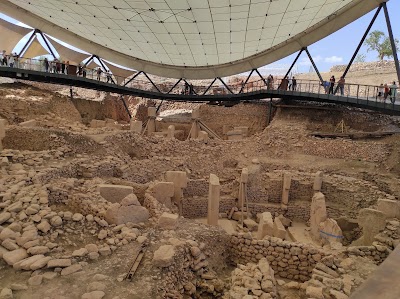Ancient City of Wasit (مدينة واسط القديمة)
Overview
Sure! Here’s an engaging overview of the Ancient City of Wasit in Iraq, tailored for foreign travelers:
Introduction to Wasit
Nestled in the heart of Iraq, the Ancient City of Wasit (مدينة واسط القديمة) is a remarkable testament to the rich tapestry of history that defines this region. Founded in the 8th century CE during the Abbasid Caliphate, Wasit was strategically positioned along the banks of the Tigris River, serving as a cultural and commercial hub that linked various civilizations. Today, it stands as a fascinating archaeological site, inviting travelers to explore its remnants and immerse themselves in the stories of a bygone era.
Historical Significance
Wasit was established by the caliph Al-Mansur, who envisioned it as a center for trade and scholarship. The city flourished for centuries, becoming a melting pot of cultures, languages, and religions. This vibrant exchange gave rise to unique architectural styles and urban planning that can still be seen in the ruins today. As you wander through the ancient streets, you can almost hear the echoes of bustling bazaars and the discussions of scholars who once debated profound philosophical questions under the open sky.
Exploring the Archaeological Site
Visitors to the Ancient City of Wasit can explore a variety of significant structures and artifacts that reflect its glorious past. One of the key attractions is the remnants of the ancient mosque, which showcases intricate architectural designs and ornate decorations that speak of the city’s once-thriving religious life. The layout of the city, with its clearly defined streets and public squares, offers a glimpse into the advanced urban planning techniques of the time.
In addition to the mosque, the site features ancient fortifications, remnants of residential buildings, and even traces of the aqueducts that supplied water to the city. These structures not only highlight the ingenuity of the architects and builders but also provide insight into the daily lives of the people who inhabited Wasit. Engaging local guides can enrich your experience, sharing stories and historical context that bring the ruins to life.
Local Culture and Modern Context
Today, Wasit is not just a window into the past but also a living community that embraces its heritage. As you visit, take the time to interact with the locals, who are often eager to share their stories and traditions. The people of Wasit are known for their hospitality, and you might find yourself invited to enjoy traditional Iraqi dishes, such as kebabs or dolma, in a local home or restaurant.
Travel Tips for Visitors
When planning your visit to the Ancient City of Wasit, consider the best times to explore. Spring (March to May) and autumn (September to November) offer pleasant weather, making it ideal for outdoor excursions. Ensure you have appropriate attire for visiting religious sites, as modest dress is often required. Additionally, it’s advisable to check travel advisories and connect with local tour guides to enhance your experience and ensure your safety.
In conclusion, the Ancient City of Wasit is more than just ruins; it is a vibrant link to Iraq’s illustrious past. With its rich history, stunning architecture, and welcoming locals, Wasit promises an unforgettable journey for those willing to venture into this remarkable corner of the world. Whether you are a history enthusiast, a culture seeker, or simply an adventurous traveler, Wasit offers a unique experience that will leave lasting memories.



